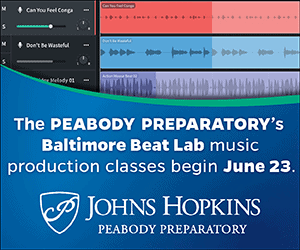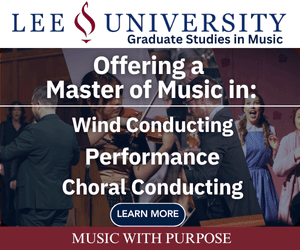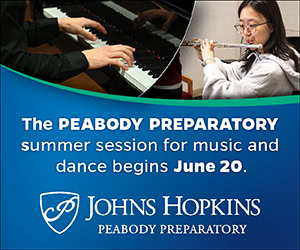/ News Posts / Giving Words Meaning: Text Analysis for Heightened Musicality
Giving Words Meaning
Text Analysis for Heightened Musicality
By William Sauerland, Ed.D., sponsored by Schmidt Vocal Arts,
sponsor of the 2019–2022 Tri-M® Music Honor Society Chapter of the Year Awards
As a choral conductor and singing teacher, I am constantly aiming to foster musicality in singers. While this process includes an initial investigation of pitches, rhythms, harmonies, and musical articulations, a singer’s musicality—the magical connection and choices a singer makes within the song—can be more challenging to teach. In this blog, I will describe one approach I use to investigate lyrics that leads to heightened and authentic musicality. I find that this process not only amplifies musicality, but also elevates stage presence and vocal technique for singers in both solo and choral performances.

2022 National Competition Jana Harmon. Photo credit: Lori Sax
I believe that when a singer thoroughly analyzes and understands a song’s text and its relationship to the music score, musicality is heightened to an apex where a song’s interpretation becomes singular, sincere, and full of personal importance. In discussing Shakespearean text, Laura Wayth discusses the value of heightening text, especially when speaking or singing poems and texts that are not in our vernacular. Wayth explains, “Poetry, like music, is heightened. […] This heightened way of being and speaking Shakespeare’s poetry is not at all untruthful, but a new, wonderful, refreshing, and vibrant ‘heightened’ kind of truth” (2015, p.4). Heightening text is a process of being more specific with articulation and storytelling, and uncovering an honest and individualistic delivery.
“…when a singer thoroughly analyzes and understands a song’s text and its relationship to the music score, musicality is heightened to an apex where a song’s interpretation becomes singular, sincere, and full of personal importance.”
This eight-step approach for singers builds musicality by challenging them to find personal connection to the text:
- Step 1: Singers should first write the words by hand in paragraph or poem form. I find that writing facilitates a greater awareness of the lyrics.
- Step 2: Singers should research the text to understand the context of the words. Who wrote the text? When and for what reason was the text written? What was happening in the author’s life?

Reginald Smith, Jr. Master Class. Photo credit: Andy Racoti
- Step 3: Singers should identify and define words and expressions that they do not understand. Any text that they do not speak fluently should be translated, both word-for-word and in poetic form. Using an online translation source is useful for checking the accuracy of their translation, but looking up each word offers a singer more variation in their own translation.
- Step 4: Singers should recite the text aloud and circle or highlight all poetic devices, such as rhyming words, alliteration, or repetition. Illuminating the poetic devices exposes the innate musicality of the text. The singer should judiciously underline words that they believe are of the most importance.
“Illuminating the poetic devices exposes the innate musicality of the text.”
- Step 5: Since lyrics are often not in our vernacular, singers should paraphrase the text. For example, if the text is, “So long lives this and this gives life to thee” (Shakespeare, Sonnet 18), a paraphrase might be: “As long as this poem is around, you will be immortal.” This step encourages the singer to think about the text using everyday words that have meaning to them.
- Step 6: Singers should write a subtext. In other words, singers should determine the content underneath the words and the motives of their character. Singers might consider these questions: (1) To whom are you (as the character) speaking in the song?; (2) What do you think and feel in the text of the song?; (3) What do you want to achieve as a storyteller through the song?; (4) What do other people/characters want from you during the song?; and (5) Did your character achieve what they wanted by the end of the song?
- Step 7: Singers should explore an “inner-text”—that is, to make a personal connection to the subtext. How does the song relate to them on a personal level? When have they felt similar emotions to those in the song? I encourage them to recall a memory or experience when the lyrics might relate to their own lived experiences. I do not, however, require singers to share their inner-text with me, as that might be too personal.
- Step 8: Based on their inner-text, singers should create a moving picture in their mind so that when singing, they can envision specific images. This often leads to more vibrant facial expression and stage presence. Having a moving picture in their mind can support memorization issues and minimize stage fright as now students can focus on storytelling instead of only attempting to “sound good.”
When this process is given full value, singers begin to emotionally connect to the lyrics, which cultivates heightened commitment to musicality and storytelling. I find that by investigating the text on an intellectual and emotional level, musicality becomes instinctive. While this process is personal to each singer, a singer’s musicality should be rendered alongside the decisions of the composer.

2022 National Competition Luke Randazzo. Photo credit: Lori Sax
This approach might be most easily accomplished in solo singing instruction, but giving time for this kind of work in the choral setting is exciting. Allowing each student to explore the text through their own lens strengthens personal connection to the song. Though the ensemble will want to make cohesive musical choices prior to a performance, they can begin this process having spent time individually grappling with and investing in the text. Whether conducting a choral rehearsal or teaching a singing lesson, whenever I empower students to give lyrics personal meaning, the rewards are a strong sense of storytelling, heightened text, enhanced stage presence, and an intrinsic commitment to making meaning through the song.
Citation:
Wayth, L. (2015). The Shakespeare audition: How to get over your fear, find the right piece, and have a great audition. Applause Theatre and Cinema Books.
Schmidt Vocal Arts is dedicated to encouraging young singers to pursue their passion for classical singing and the vocal arts through scholarships, vocal competitions, and educational programs for young singers.
About the author:
 Dr. William Sauerland is Assistant Professor of Music at Purdue University Fort Wayne, where he conducts choral ensembles, teaches voice lessons and classes in music education, and supervises student teachers. Sauerland was previously a Lecturer in Voice at San Francisco State University, and the Director of Choral and Vocal Studies at Chabot College in Hayward, California. He is proud to serve as a Schmidt Vocal Arts adjudicator/clinician and voice faculty member for the Schmidt Vocal Institute.
Dr. William Sauerland is Assistant Professor of Music at Purdue University Fort Wayne, where he conducts choral ensembles, teaches voice lessons and classes in music education, and supervises student teachers. Sauerland was previously a Lecturer in Voice at San Francisco State University, and the Director of Choral and Vocal Studies at Chabot College in Hayward, California. He is proud to serve as a Schmidt Vocal Arts adjudicator/clinician and voice faculty member for the Schmidt Vocal Institute.
Praised by the San Francisco Chronicle for his “limpid tone and astonishing eloquence,” Sauerland remains active as a professional countertenor. He is a member of the Indianapolis-based early music chamber ensemble Echoing Air. Sauerland’s recent solo appearances include the American Bach Soloists, Festival Opera Company, Folger Consort, Handel Opera Project, Musica Angelica Baroque Orchestra, Oakland Symphony Orchestra, and Pacific Chorale. A former member of the Grammy Award-winning vocal ensemble Chanticleer, Sauerland has sung throughout the world, and recorded multiple albums for Warner Classics.
As a researcher and scholar, Dr. Sauerland is the author of the book Queering Vocal Pedagogy, published by Rowman & Littlefield in June 2022. His other publications have appeared in the Journal of Singing, Journal of Music Teacher Education, the Choral Journal, and in two books: Resonance (Pavane Publishing, 2021) and The Choral Conductor’s Companion (GIA Publications, 2020).
Sauerland received a Doctor of Education in Music from Teachers College, Columbia University. As a Marshall Scholarship recipient, he earned a Master of Music and Post-Graduate Diploma in Advanced Vocal Performance from the Royal College of Music in London. Raised on a small dairy farm in Ohio, he received a Bachelor of Music in Music Education and Vocal Performance from Miami University in Oxford, Ohio.
Did this blog spur new ideas for your music program? Share them on Amplify! Interested in reprinting this article? Please review the reprint guidelines.
The National Association for Music Education (NAfME) provides a number of forums for the sharing of information and opinion, including blogs and postings on our website, articles and columns in our magazines and journals, and postings to our Amplify member portal. Unless specifically noted, the views expressed in these media do not necessarily represent the policy or views of the Association, its officers, or its employees.
September 22, 2022. © National Association for Music Education (NAfME.org)
Published Date
September 22, 2022
Category
- Repertoire
Copyright
September 22, 2022. © National Association for Music Education (NAfME.org)




